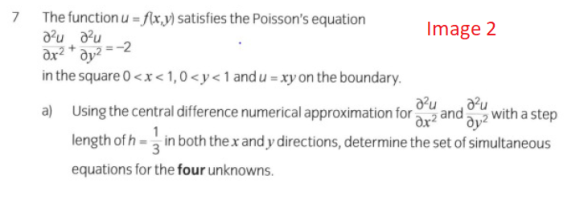Hi All Have a nice day. This is related to my second question based on my first question. Please see the following link. for the my first question
https://www.freemathhelp.com/forum/threads/please-advise-the-to-the-answer.138130/#post-590987
In the attached image 1, the boundary condition is given. However, in the image 2, the boundary condition is not given. Therefore, my question is: how do I identify boundary conditions? using image 2 Please advise.
Note In my previous question, ( Above Link ) the group members helped identify the boundary condition, and I were able to solve the problem. However, in this question, some information is missing, making it difficult for me to find the boundary condition


https://www.freemathhelp.com/forum/threads/please-advise-the-to-the-answer.138130/#post-590987
In the attached image 1, the boundary condition is given. However, in the image 2, the boundary condition is not given. Therefore, my question is: how do I identify boundary conditions? using image 2 Please advise.
Note In my previous question, ( Above Link ) the group members helped identify the boundary condition, and I were able to solve the problem. However, in this question, some information is missing, making it difficult for me to find the boundary condition


Last edited:
